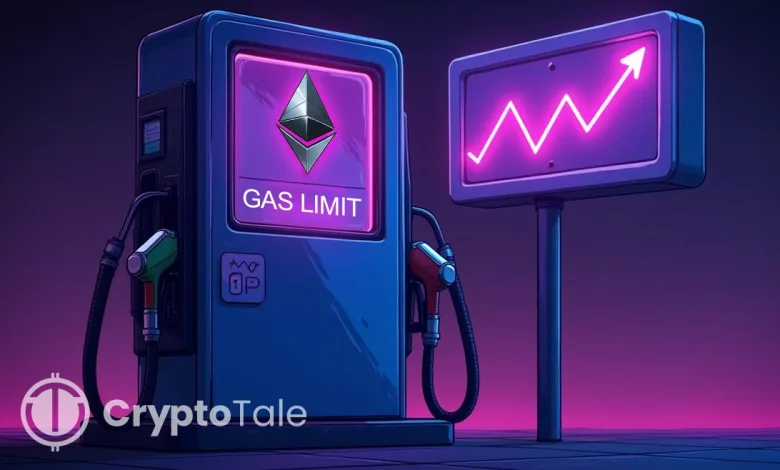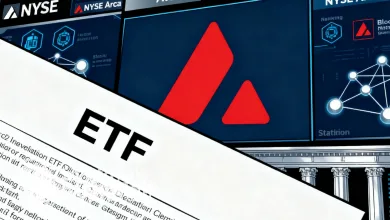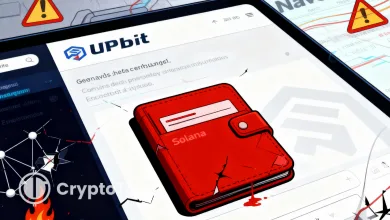Ethereum Lifts Gas Limit to 60M Before Key Fusaka Upgrade

- Ethereum gains wider blockspace after raising the gas cap to 60M before the Fusaka shift.
- Validators support the new limit as developers ready the chain for heavier rollup activity.
- Fusaka brings PeerDAS and new systems that guide Ethereum into a broader scaling phase.
In a turn of events in the blockchain sphere, Ethereum increased its block gas limit from 45 million to 60 million. The change arrived just days before the Fusaka hard fork, creating more space for transactions, rollup data, and higher network activity. Developers prepared the base layer for heavier loads as more validators signaled support. The boost in blockspace now sets the stage for deeper scalability changes expected under Fusaka.
A Network Preparing for Higher Load
The gas limit determines the amount of computation that fits into each block. It also determines the number of transactions and smart contract actions that validators can include. The new limit expands blockspace and gives the network more throughput headroom during peak periods.
Validators activated the 60 million threshold through Ethereum’s standard gas-limit drift mechanism. This process allows validators to signal readiness without a formal hard fork. Once more than half of the network supported the change, the higher limit went live. Over 513,000 validators participated in this transition, showing broad technical readiness across the ecosystem.
Throughout the previous year, the community was engaged in the “Pump The Gas” initiative. This initiative was a team effort to increase throughput without risk, enhance efficiency, and set up validators for larger blocks. The team planned the action as they experimented and found their limits on test networks.
Three main improvements enabled the increase to be realized. EIP-7623 introduced significant protections that played a major role in blocking huge blocks. Client teams carried out Node software upgrades to minimize the time it takes for blocks to propagate.
Developers’ confidence in the mainnet rollout was bolstered by testnet environments consistently delivering the same performance. These measures demonstrated how collaborative engineering can push system limits without disrupting users. Ethereum Foundation researcher Toni Wahrstätter reported that the network has doubled its block capacity in one year. He further noted that this signals the onset of a more extended period of execution-layer improvements.

Fusaka and PeerDAS Define the Next Phase
The updated gas limit arrives ahead of the Fusaka upgrade scheduled for December 3. Fusaka introduces a major redesign of data availability sampling through a system known as PeerDAS. PeerDAS is designed to help rollups publish data efficiently and reliably, which is crucial as more applications move to Layer-2. Fusaka has already gone through multiple testnet deployments. A $2 million audit contest was launched to expand review coverage and attract deeper testing.
The upgrade also delivers client refinements, consensus adjustments, and several security enhancements. These additions tune Ethereum’s core systems for the next phase of scaling. Vitalik Buterin weighed in on the gas limit issue. He pointed out that a network can use its capacity to increase continuously, but only with very gradual changes.
Furthermore, he mentioned that raising the costs for certain activities, such as complex contract operations and some precompiles, would be effective in reducing their frequency, thereby increasing the system’s overall throughput and, at the same time, keeping it healthy. This idea opened up a central question for both developers and users, namely, how can Ethereum expand without causing new performance bottlenecks?
Related: Vitalik Buterin Hits at FTX Failings, Backs Ethereum’s Model
Rollup Growth through Blockspace Expansion
The increase in gas limit directly affects the relationship between rollups and Ethereum. The larger blockspace means that rollups not only have more space to publish data and settle transactions but also experience less congestion during high-volume rollups, leading to better finality for users. Additionally, it opens the door to more intricate rollup designs that depend on frequent settlement or larger data batches.
With the advent of the Fusaka era, Ethereum will transition into a new stage characterized by scalability and rollup-centricity. The gas limit increment is indeed a first step in this direction, and it makes the network ready for the more significant alterations that will take place in December and beyond.





